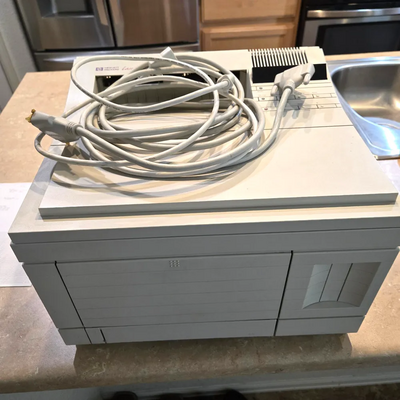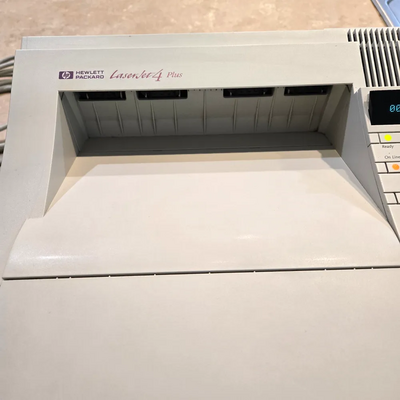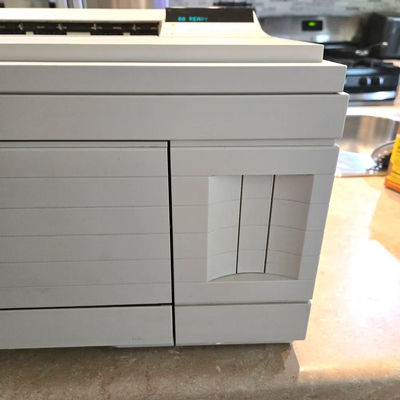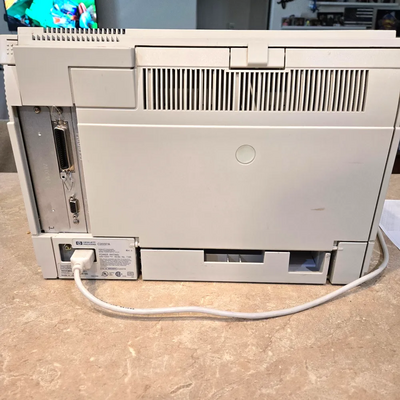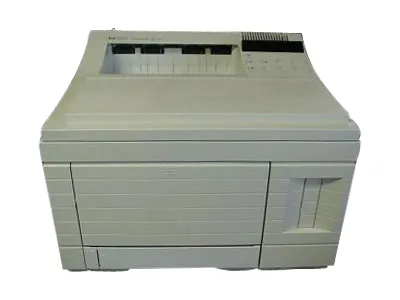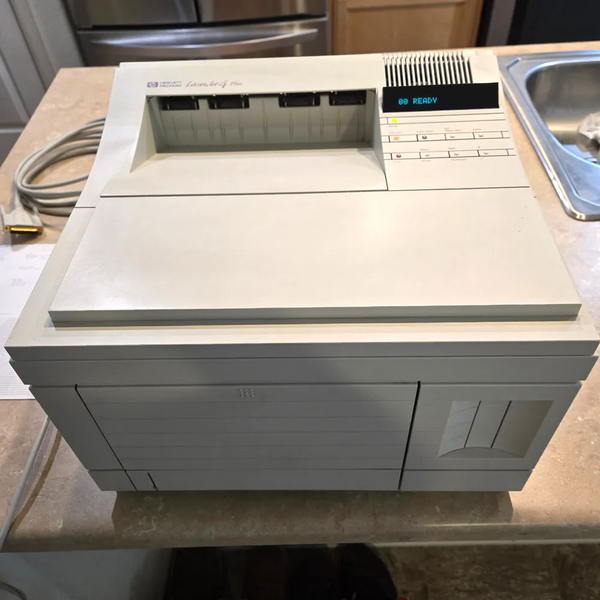
HP LaserJet 4 Plus
| Brand | HP 1994 |
| Model | C2037A |
| Released Year | 1994 |
| Type | Printers |
| Status | Discontinued |
Quick view
Overview
The HP LaserJet 4 Plus is a monochrome laser printer designed primarily for office use, launched in 1994. It features a print speed of up to 16 pages per minute, leveraging 600 dpi resolution to deliver high-quality black and white output. Utilizing a laser printing engine combined with electrophotographic technology, it supports multiple paper sizes and types, with input trays accommodating up to 500 sheets. The printer is equipped with a 16 MHz processor and 6 MB of RAM, which can be expanded for improved performance. Connectivity options include a parallel port and HP's proprietary JetDirect interface for network printing, highlighting its compatibility with a range of operating systems including Windows and UNIX. Its firmware supports PCL 5e printing language, ensuring broad software support for document formatting and printing commands.
Designed with reliability in mind, the HP LaserJet 4 Plus incorporates a robust paper handling mechanism and an optional duplexer unit for double-sided printing, enhancing productivity and paper conservation. The printer's toner cartridge is user-replaceable, simplifying maintenance and minimizing downtime. Overall, its technical architecture focuses on balancing speed, print quality, expandability, and network integration for office environments.
Specifications
| MPN | C2037A |
| UPC | 0859236067154 |
| Model | LaserJet 4 Plus |
| Technology | Laser |
| Connectivity | Parallel port, optional JetDirect network card |
| Output Type | Black & White |
| Type | Workgroup Printer |
| Weight | 34.6 lbs (15.7 kg) |
| Depth | 15.88in |
| Height | 11.7in |
| Width | 16.4in |
| Max. Memory | 66MB |
| Platform | M·A·C, PC Products |
| Extend Printer Technology | Laser |
| Duplex Printout | Optional |
| Installed RAM | 2MB |
| Color | White |
| Computer Operating System | Microsoft Windows XP Home, Microsoft Dos, Microsoft Windows 98, Microsoft Windows 95, Microsoft Windows 2000, Ibm Os/2, Microsoft Windows 3.X, Microsoft Windows NT, Microsoft Windows Server 2003, Microsoft Windows Millennium Edition, Apple Mac OS 9, Microsoft Windows XP Pro X64, Apple Mac OS 8, Apple Mac OS X |
| Form Factor | Stationary |
| Media Type | Envelopes, Transparencies, Labels, Plain Paper |
| Max Resolution (Bw) | 600x300DPI |
| Monthly Duty Volume | 20000 Pages |
| Max Media Size | Legal (216x356 Mm, 8.5x14in) |
| Black Print Speed | 12ppm |
| Media Capacity | 350 Sheets |
| Printer Type | Monochrome Laser Printer |
| Print Speed | 16 pages per minute (ppm) |
| Print Resolution | 600 x 600 dpi |
| Processor Speed | 16 MHz |
| Standard Memory | 6 MB RAM |
| Maximum Memory | 36 MB RAM |
| Paper Input Capacity | 500 sheets standard input tray |
| Paper Output Capacity | 250 sheets |
| Supported Paper Sizes | Letter, Legal, Executive, A4, A5, B5 |
| Supported Operating Systems | Windows 3.1/95/NT, MS-DOS, OS/2, Mac OS, various UNIX platforms |
| Printer Languages | PCL 5e, PJL |
| Duplex Unit | Optional (automatic double-sided printing) |
| Dimensions (W x D x H) | 16.5 x 16.5 x 10 inches |
| Toner Cartridge | HP C3903A Black Toner Cartridge |
| Power Requirements | 100-127 V or 220-240 V, 50/60 Hz |
| Operating Noise | Approx. 53 dB |
| Duty Cycle | Up to 25,000 pages per month |
Images
Key Advantages
The HP LaserJet 4 Plus boasts fast print speeds of 16 ppm, which was advanced for its time, enabling efficient document processing in busy offices. Its 600 dpi resolution provides sharp, professional-quality printouts suitable for text and graphics. The printer supports a wide variety of media sizes and types, offering flexibility for diverse printing needs. Expandable memory allows improved handling of complex documents and larger print jobs. Network compatibility through the JetDirect interface simplifies deployment across multiple users in an office. The optional duplex printing capability reduces paper consumption and operating costs, underscoring its eco-friendly design.
Limitations
Despite its robustness, the HP LaserJet 4 Plus is limited to monochrome printing, restricting its use for color document requirements. Its processing speed and memory capacity are modest by modern standards, which can slow down printing of graphic-rich or large volume jobs. The lack of USB connectivity requires specific interfaces, limiting compatibility with newer computers. The printer's overall footprint and weight are relatively large, making it less suitable for small workspaces. Replacement parts and consumables may be difficult to procure due to the printer's age. Additionally, its firmware and driver support may not be compatible with the latest operating systems without third-party solutions.
FAQ
What is the print speed of the HP LaserJet 4 Plus?
The HP LaserJet 4 Plus prints at a speed of up to 16 pages per minute.
Does the HP LaserJet 4 Plus support duplex printing?
Yes, it supports duplex (double-sided) printing with an optional duplexer accessory.
What connectivity options are available for this printer?
Connectivity includes a parallel port and optional JetDirect network interface card.
What is the maximum print resolution of the HP LaserJet 4 Plus?
The printer offers a maximum resolution of 600 x 600 dpi.
Is the HP LaserJet 4 Plus still supported by HP?
No, the HP LaserJet 4 Plus has been discontinued and is no longer officially supported.
What type of printing technology does the HP LaserJet 4 Plus use?
It uses laser printing with electrophotographic technology.
Can memory be upgraded on the HP LaserJet 4 Plus?
Yes, the printer's memory can be expanded from the standard 6 MB up to 36 MB to improve performance.
Disclaimer
The content on is provided for general informational purposes only. We do not guarantee the accuracy, completeness, or reliability of any information, specifications, or visuals presented on the site.
is not responsible for any content, images, or data uploaded or shared by users. Users are solely responsible for the content they submit.
We may include links to third-party websites for convenience. We do not endorse or take responsibility for the content or policies of any external sites.
Use of the site is at your own risk. Always verify critical information independently before making decisions based on content from this website.

